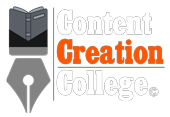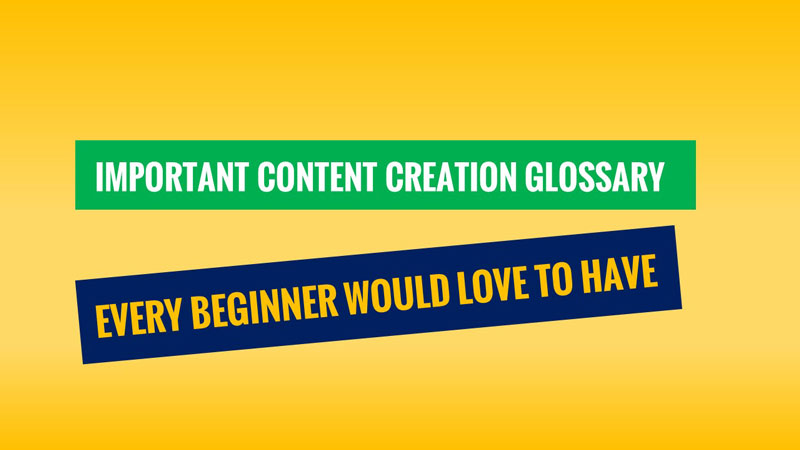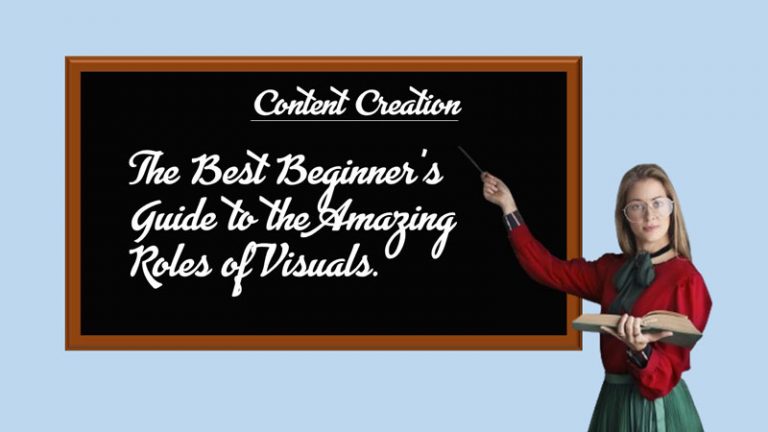What is ‘glossary?’
Find out the answer and explanation below.
Glossary is a singular noun (plural: glossaries) used for the list of terms in a special subject, field, or area of usage, with accompanying definitions.
When published in book form, it is usually found at the back of the book, explaining or defining difficult or unusual words and expressions used in the text.

You can also refer to it as a dictionary, and you would be correct.
Every profession, including medicine, banking, journalism, law, mechanical engineering, and accountancy, has its own glossary or dictionary that contains special words or terminologies used for communication among its practitioners and with their customers.
For example, ‘trial balance,’ ‘trading and profit and loss account,’ and ‘balance sheet,’ are part of the glossary of accountants; while ‘deposit,’ ‘book balance,’ and ‘account balance,’ are terms commonly found in the glossary of bankers, and so on and so forth.
Lest I forget, businesspeople do also have their own glossary or dictionary which contains their own peculiar terms which they use when interacting among themselves and when interacting with their customers.
Examples of the terminologies in their glossary are ‘cash-on-delivery,’ ‘cash-n-carry,’ ‘book-me-down,’ ‘buy-today-pay-tomorrow,’ ‘buy-three-get-one-free,’ among others. Anybody who does business with them should understand these and other kindred terms.
What the foregoing definition and explanation mean is that every profession has its own glossary or dictionary of terminologies which its practitioners use to communicate among themselves and with their own publics.
Content Creation Glossary
Content creation is no exception to this rule; like other professions, it has its own glossary containing key terms, concepts, and definitions related to creating content for various platforms such as blogs, social media, or websites.
It is that glossary that I want to discuss and share with you here, and I know you would love it.
Whether you’re a budding content creator or a seasoned pro, the glossary will serve as your comprehensive resource, a reference tool and companion, providing clarity on certain terms that you would need to create good content.
If you’re a beginner who is just starting out in the field of content creation, you would really love the glossary because it would help you master the vocabulary of your beautiful profession.

Having a glossary like the one I’m about to share with you will make it easier for you to understand and master the necessary terminologies correctly, ultimately helping you become more proficient in your content creation efforts.
Let’s dive into the glossary, which is arranged alphabetically to make it easy for you to understand:
Letter ‘A’
Analytics: Data and metrics used to measure the performance and effectiveness of content, such as pageviews, bounce rate, and conversion rate.
Anchor text: The clickable text used in a hyperlink, which describes the content of the linked page.
A/B testing: The practice of testing different versions of a piece of content to see which performs better.
Alt text: Also known as alternative text, is a brief and specific description added to an image or other non-textual element in content, to describe the content and function of the image for those who may not be able to see it, such as visually impaired users who rely on screen readers.
Letter ‘B’
Blogging: Writing and publishing content on a blog, often used for thought leadership and content marketing.
Bounce Rate: The percentage of visitors who leave a website after viewing only one page.
Branding: The process of creating a distinctive brand identity that is expressed in all marketing and content.
Buyer Persona: A fictional representation of a target audience, used to guide content creation and marketing strategies.
Letter ‘C’
Call-To-Action (CTA): A prompt that encourages the audience to take a specific action, such as clicking a button or filling out a form.
Clickbait: Sensational or misleading content designed to attract clicks and traffic.
CMS (Content Management System): A software application used to create, edit, and manage digital content, including WordPress or Drupal.
Content: Any information that is created and shared to inform, educate, or entertain an audience.
Content Audit: An analysis of existing content to determine its quality, relevance, and effectiveness.
Content Calendar: A schedule of planned content to be published, including dates and topics.
Content Creation: The process of developing and producing content for a specific purpose or audience.

Content Distribution: The methods used to share and promote content, such as email marketing, social media, or paid advertising.
Content Format: The structure or presentation style of content, such as blog posts, videos, infographics, podcasts, etc.
Content Marketing: A marketing strategy that focuses on creating and sharing valuable content to attract and retain an audience.
Content Marketing Institute Glossary: This resource includes over 130 terms and definitions related to content marketing and content creation.
Content Audit: An analysis of existing content to determine its quality, relevance, and effectiveness.
Content Optimization: The process of improving content for search engines or other platforms, such as by adding keywords or optimizing headlines.
Content Repurposing: The process of adapting or reusing existing content for a new audience or platform.
Content Strategy: A plan for developing and distributing content, taking into account business goals and audience needs.
CoSchedule Content Marketing Glossary: This glossary includes over 300 terms and definitions related to content marketing, social media, and digital marketing.
Conversion: The desired action that a piece of content is designed to inspire, such as a sale or a sign-up.
Copyblogger: A popular website and resource hub for content marketing and copywriting. It provides valuable insights, tips, and strategies for creating compelling content that attracts and engages audiences online. Beginners can use Copyblogger to quickly familiarize themselves with key terms and concepts in the field.”
Copywriting: The practice of writing persuasive and engaging content for marketing and advertising purposes.
Letter ‘D’
Design: The visual and aesthetic elements used in content, such as layout, typography, and color.
Digital Marketing: The practice of promoting products or services using digital channels, such as social media, email, and search engines.
Letter ‘E’
Engagement: The level of interaction and activity that a piece of content generates, such as likes, shares, comments, and clicks.
Engagement Rate: The percentage of your audience that interacts with your content, often measured by likes, shares, comments, or other forms of engagement.
Evergreen Content: Content that remains relevant and valuable over a long period of time.
Letter ‘F’
Font: A specific typeface used in a piece of content.
Frequency: The rate at which content is published or shared, such as daily, weekly, or monthly.
Letter ‘G’
Guest Blogging: The practice of writing and publishing content on another website, usually for promotional purposes.
Letter ‘H’
Headline: The title or heading of a piece of content, designed to grab the reader’s attention.
HTML: Hypertext Markup Language – the code used to create and structure content on the web.
HubSpot Content Marketing Glossary: This comprehensive glossary includes over 60 terms and definitions related to content marketing.
Letter ‘I’
Inbound Marketing: A marketing strategy that focuses on attracting customers through content, SEO, and other non-intrusive methods.
Influencer: An individual with a large and engaged following on social media or other platforms, who can promote or endorse products or services.
Influencer Marketing: A form of marketing that involves partnering with influencers to promote products or services to their audience.
Infographic: A visual representation of data or information, designed to be easily understood and shared.
Letter ‘J’
Journalism: The practice of reporting news and current events through various media channels, including newspapers, magazines, radio, and television.
Letter ‘K’
Keyword: A word or phrase that describe the main topic or theme of a piece of content, used for SEO purposes to optimize content for search engines and improve visibility.
Keywords: Words or phrases that describe the main topic or theme of a piece of content, used for SEO purposes
KPI (Key Performance indicator): A metric used to measure the success and effectiveness of a piece of content, such as clicks, conversions, or engagement.
Letter ‘L’
Landing Page: A specific web page designed to convert visitors into leads or customers, often used in conjunction with paid advertising.
Lead Generation: The process of attracting and converting prospects into leads, often through content marketing efforts.
Lead Magnet: An incentive offered in exchange for contact information, such as an email address.

Lead Nurturing: The process of building a relationship with potential customers through targeted content and communication.
Link Building: The process of acquiring hyperlinks from other websites to your own, with the goal of improving search engine visibility.
Letter ‘M’
Metadata: Information about a piece of content, such as its title, description, and tags.
Microcontent: Short-form content designed for quick consumption, such as social media posts or headlines.
Moz SEO Glossary: While not specific to content creation, this glossary includes over 200 terms and definitions related to search engine optimization (SEO), which is an important aspect of content creation.
Letter ‘N’
Native Advertising: Paid advertising that blends in with the surrounding content and appears native to the platform.
Newsletter: A regular email sent to subscribers, containing news, updates, or promotions.
Letter ‘O’
Organic Reach: The number of people who see a piece of content without paid promotion or advertising.
Letter ‘P’
Persona: A fictional representation of a target audience, used to guide content creation and marketing strategies.
Podcast: A digital audio program that can be downloaded or streamed online.
Press Release: A written statement issued to the media to announce news or events.
Publishing: The act of making content publicly available for consumption.
Letter ‘Q’
Quality Content: Content that is informative, valuable, and engaging for the target audience.
Quality Score: A metric used in advertising platforms like Google Ads to measure the quality and relevance of your ads and landing pages.
Letter ‘R’
RSS: Really Simple Syndication – a way to automatically receive and share updates from websites or blogs.
Reach: The number of people who see a piece of content, including both organic and paid methods.
Repurposing: The process of adapting or reusing existing content for a new audience or platform.
Letter ‘S’
SEO: Search Engine Optimization – the practice of optimizing content to rank higher in search engine results pages (SERPs).
Shareability: The likelihood that a piece of content will be shared by others on social media or other platforms.
Social Media: Digital platforms used to create, share, and exchange content and ideas with a community.
Sponsored Content: Paid content that is created to promote a product, service, or brand.
Storytelling: The art of using narrative techniques to engage and connect with an audience.
Subheading: A secondary heading that provides additional information or context to the main headline.
Letter ‘T’
Tag: A label or keyword used to categorize and organize content.
Target Audience: The specific group of people who a piece of content is created for and aimed at.
Testimonial: A statement or review from a satisfied customer or client, used to promote a product or service.
Title Tag: The HTML element used to define the title of a web page, displayed in search engine results pages (SERPs).
Letter ‘U’
Unique Visitors: The number of distinct individuals who visit a website or piece of content.
User Experience (UX): The overall experience of a user when interacting with a website, app, or other digital product, often influenced by content quality and presentation.
User-Generated Content (UGC): Content created by customers or fans of a brand, such as reviews, testimonials, or social media posts.
Letter ‘V’
Video Marketing: A marketing strategy that uses video content to promote products or services.
Viral Content: Content that spreads rapidly and widely or becomes extremely popular and widely through social media and other online channels.
Voice: The unique personality or brand identity expressed in a piece of content.
Voice Search Optimization: The process of optimizing content to appear in voice search results, which often requires a different approach than traditional SEO.
Letter ‘W’
Webinar: A live or pre-recorded seminar or presentation that is delivered over the web.
Whitepaper: A comprehensive report or guide that presents research or a solution to a problem.
Letter ‘X’
XML Sitemap: A file that lists all of the pages on a website, used to help search engines crawl and index content
Letter ‘Y’
YouTube: A video-sharing platform owned by Google, used by creators to share and monetize video content.
Letter ‘Z’
Zero-Click Searches: Search engine results pages (SERPs) that display answers to queries without requiring a click-through to a website.
Conclusion: Important Content Creation Glossary Every Beginner Would Love to Have
Remember that language is the bridge between ideas and impact. By embracing the vocabulary of content creation, you’re not only enriching your skill set but also amplifying your potential for success.
Mastering the language of content creation is an indispensable tool for you to excel in the content creation landscape.
As you absorb and apply the definitions of these terms to your content creation endeavours, you’ll find yourself equipped with the knowledge to navigate the complexities of the field, as well as to innovate and stand out.
So, whether you’re crafting compelling blog posts, curating captivating visuals, or orchestrating persuasive marketing campaigns, let this glossary be your guiding light, illuminating the path toward effective communication, engagement, and conversion.
Important Content Creation Glossary Every Beginner Would Love to Have. THE END.
PS: If you enjoyed this post, please, Important Content Creation Glossary Every Beginner Would Love to Have, leave a comment below and tell us how much you love it and what you may want us to do to serve you better.





